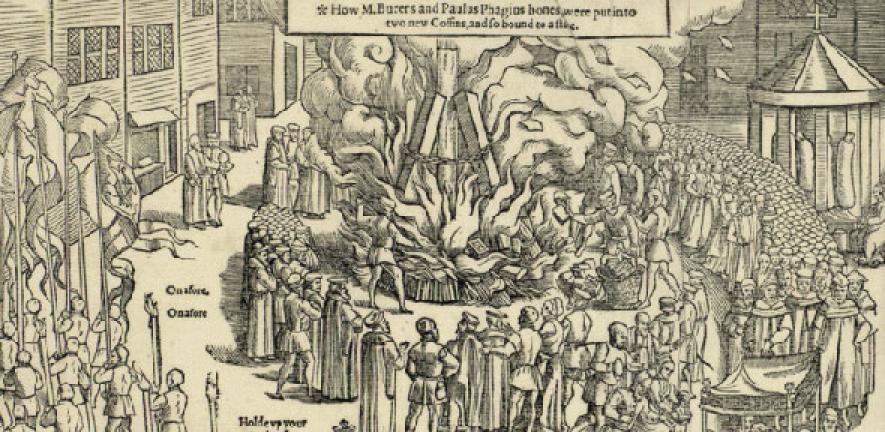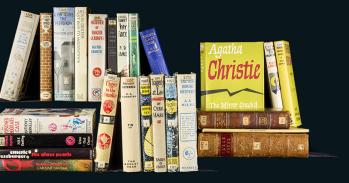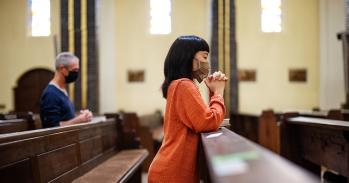
The Reformation is famously traced to an event that took place in Germany 500 years ago and reverberated across Europe. An online exhibition paints a vivid portrait of a society undergoing profound change – and free events this weekend commemorate an episode of corpse burning in Cambridge.
The Reformation is famously traced to an event that took place in Germany 500 years ago and reverberated across Europe. An online exhibition paints a vivid portrait of a society undergoing profound change – and free events this weekend commemorate an episode of corpse burning in Cambridge.
Our exhibition explores how the Reformation transformed traditional modes of remembering and involved concerted attempts at forgetting, as well as the ways in which it created a rich and vibrant memory culture of its own.
Alex Walsham
On 31 October 1517, almost 500 years ago, an event occurred that sparked a religious schism across Europe, one that was to see Catholicism challenged not by outsiders but by insiders unhappy with what they perceived as the abuses and corruption of the medieval church.
The nailing of Martin Luther’s 95 theses to a church door in the small German town of Wittenberg is embedded in legend. Scholars now question whether this episode actually occurred. But there is no doubt that a movement took hold that changed the face of Christian belief and has left lasting legacies in our culture.
To mark the anniversary of the Reformation, a team of historians from Cambridge and York Universities has been looking afresh at the ways in which the fragmentation of Christendom has been framed over the centuries –and the way belief intertwined with gender, politics and much more.
The cross-curricular project brought together historians Professor Alex Walsham and Dr Ceri Law from the University of Cambridge and literary scholars Professor Brian Cummings and Dr Bronwyn Wallace from the University of York. The researchers were able to draw on the remarkable archives and libraries of the two institutions plus Lambeth Palace Library.
Both York and Cambridge are cities deeply affected by the Reformation. In Cambridge, events staged at Great St Mary's church this weekend will tell the shocking story of two foreign Protestant theologians who held academic posts in Cambridge during the reign of Edward VI. The disinterred bodies of Martin Bucer and Peter Phagius were publically burnt in Cambridge market square in 1557.
The creation of an outstanding online exhibition, hosted by Cambridge University Library, makes the pioneering work by the team’s scholars accessible to all. The exhibition breaks what is often regarded as a hard-to-grasp topic into accessible themes and, with the aid of stunning images, creates a vivid portrait of life, love and death in the 16th century and beyond.
Walsham says: “Our exhibition explores how the Reformation transformed traditional modes of remembering and involved concerted attempts at forgetting, as well as the ways in which it created a rich and vibrant memory culture of its own.”
The Reformation was complex and far-reaching, taking the form of many Reformations. In simplest terms, it was an upheaval that shattered Catholic Europe and paved the way for separate movements and responses to orthodoxy.
Luther was a university professor and preacher. His theses challenged a system called the sale of indulgences whereby people could reduce punishment after death for their sins and spend a shorter period in purgatory – a sort of ‘clearing house’ for heaven.
Luther’s followers – Protestants – hit out at many of the rituals of medieval Christianity. Religion before the Reformation has been described as ‘a religion of the body’. At the mass, all five senses came into play. The priest conveyed the mystery of the rite through a combination of different manual and bodily actions, including kissing the book and raising the host.
For the laity, this visual experience was compounded by the sound of bells, the smell of incense, the sight of candles, the touching of hands, the taste of offerings, in a synaesthesia of devotion. Prayer was centred on bodily actions, whether of prostration or of counting prayers on a rosary.
The Reformation called many of these actions into question by labelling them forms of ‘superstition’ and ‘idolatry’. The Reformed liturgy of the Book of Common Prayer in 1549 abolished many aspects of bodily ritual such as the elevation of the host. And yet, the Protestant liturgy provided for scriptural ritual such as washing with water in baptism and laying on of hands in ordination.
Protestantism also accepted kneeling as a sign of devotion or of penitence as well as signing with the cross as a sign of God’s covenant with his people. These actions continued to cause controversy and dissent throughout the 16th and 17th centuries. The 1549 Book of Common Prayer still included an exorcism in baptism; but in 1552 it was removed.
Religious change impacted profoundly not only on collective and national ways of viewing the past, but on the ways that individual men and women saw their own narratives and the ways in which they recorded the lives of their families and friends. Numerous real voices find a platform in the Remembering the Reformation exhibition.
Family life was changing as Protestant clergy were allowed to marry. Among the voices that come through are those of Tobie Matthew and his wife Frances. An 18th century copy of a diary kept by Tobie Matthew records his preaching from 1583, when he became dean of Durham, to 1622. In this time he gave 1,992 sermons.
The diary offers a rare and valuable insight into patterns and selections of sermon topics from the court to parishes. It contains glimpses of the personal as Matthew notes his movements, career and the illnesses and misfortunes that befell him. On 24 March 1603 he heads his entry with ‘Eheu! Eheu!’ – an expression of despair at the death of Elizabeth I.
A document in the hand of Tobie’s wife Frances (1550/1-1629) reflects a deeply personal aspect of their lives. She lists for posterity ‘The birthe of all my children’, including the place, date and time of birth, and details of godparents. She decided later to add the details of the deaths of the four out of six children who died before adulthood.
In doing so, Frances created a poignant record of loss. Of her son, Samuell Matthew, she notes: “This Samuell Matthew, my most Deerly-Beloved sonne, departed this life of Christianity the 15 of June 1601, and is buryed in Peeter-house in cambridge.” The phrase ‘this life of Christianity’ is telling: belief was not just an adjunct to life but its central purpose.
The document also bears testament to a phenomenon created by the Reformation: the clerical family. Frances was the daughter of a bishop and married into two episcopal families. Her first husband was son of Matthew Parker, the first Elizabethan archbishop of Canterbury. After he died, she married Tobie Matthew.
Reformers celebrated the ideal of such ‘godly’ families. But even such a strong Protestant pedigree as Frances’s brought no guarantees. Her son Toby (1577-1655) converted to Catholicism, much to the distress of both his parents. Religious differences were destined to continue to divide as well as unite.
Walsham says: “People were deeply divided by faith as a result of the Reformation and memory was at the heart of the ways in which it fragmented society and challenged the ties of affection that bound families together. But remembering the medieval and Protestant past was also a mechanism for cementing powerful identities.”
‘Remembering the Reformation’, an interdisciplinary and collaborative research project, is generously funded by the UK Arts and Humanities Research Council (http://rememberingthereformation.org.uk/).

The text in this work is licensed under a Creative Commons Attribution 4.0 International License. For image use please see separate credits above.




